7 Exercises To Strengthen Toes That Every Runner Should Do
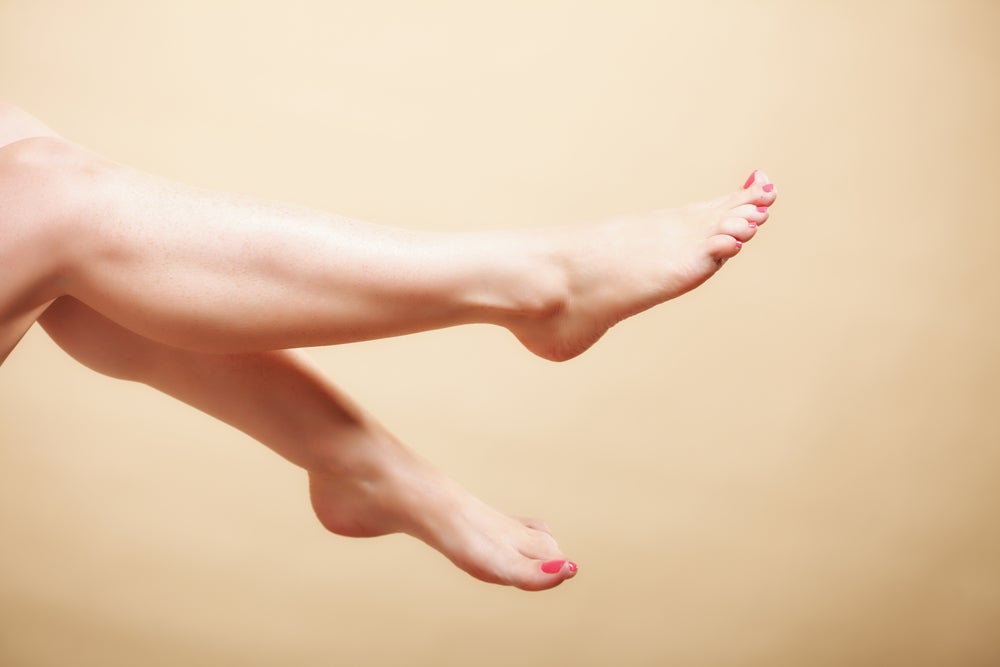
Photography by Oliver Baker
“Crack!” It’s the last thing any runner wants to hear while running…right next to “Pop!” or “Snap!” While discomfort can occur anywhere in the body, the lower legs (calves, ankles and feet) are one of the most vulnerable areas. That’s because bones in this part of your body tend to be more fragile and contain less muscular cushioning.
Unfortunately, it’s also these delicate sections that are responsible for carrying the majority of our body weight. Whether you are plodding along pavement, dashing through wilderness trails or beach running in the sand, your lower legs are going to experience some pressure.
According to athletic trainer Sarah Koss, who works at Minnesota’s University of Northwestern–St. Paul, there are three lower-leg injuries most common in runners.
Plantar fasciitis occurs when the fibrous tissue of the foot, connecting the heel to the toes, causes pain in the arch and heel.
Shin splints are when the soft tissue surrounding the tibia (the bone connecting the knee to the ankle) becomes inflamed. Koss says without treatment, this injury can become a stress fracture.
Achilles tendinitis indicates the inflammation of the tendon connecting the calf to the heel. Pain can be felt anywhere from the heel to the lower calf with redness and swelling.
The good news is these injuries can be prevented with the right kind of post-run exercises and stretches. This seven-step program focuses on creating strength, mobility and stability in the feet, ankles and calves. Remember, an ounce of pedi-prevention is worth a pound of cure.
WORKOUT GUIDELINES
Always perform the exercises in order (ending with the stretches) after a workout while the muscles are still warm. Start by doing this program three times a week—more serious runners, with time, may choose to move it up to five weekly sessions. Do what feels right and listen to your body.
1—Clamshells
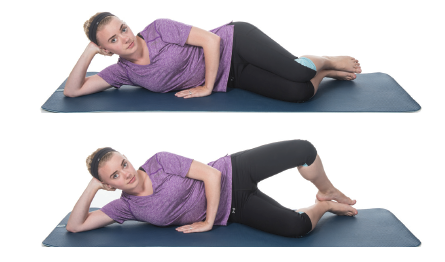
Running is a forward-only exercise, so runners’ gluteus medius (one of three muscles in the butt that is partially responsible for side-to-side motion) tends to weaken and can lead to many lower-leg problems. Strengthening this helps to prevent and aid in rehab of lower-leg injuries.
Lie on your side with your knees bent 90 degrees and your hips and shoulders stacked. (If you wish, you can make the workout more difficult by adding a resistance band around the knees.) Raise your top knee away from the bottom one, then slowly return to the starting position. Make sure not to roll your hips forward or backward during the exercise. Perform two sets of 15 reps on each side.
2—Towel Scrunches
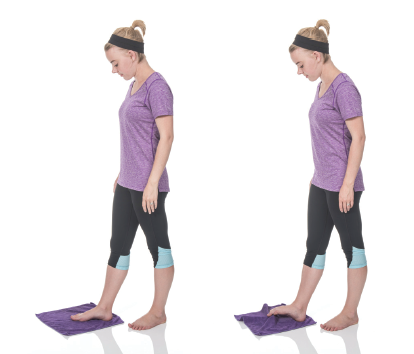
Wearing shoes in daily life is necessary of course, but it can leave small muscles in the feet weak due to insufficient use, which in turn may lead to plantar fasciitis.
Begin in a staggered standing position with your forward foot resting on a fl at towel and the knee slightly bent. Keep your back knee straight. Use your toes to scrunch up the towel, making sure to keep the rest of your foot in contact with the ground. Perform three sets of 15 scrunches on each foot.
3—Seated Toe Taps
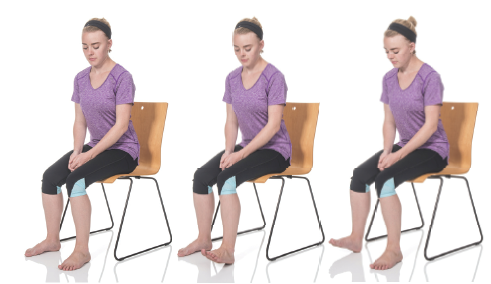
This exercise helps strengthen your tibialis anterior, the calf muscle affected most by shin splints.
Sit in an upright position with your feet shoulder width apart. Alternate tapping your toes while keeping your back straight. Try to raise your toes as high and fast as you can without lifting your heels from the ground. You can make this exercise a little more difficult by placing your hands on top of your knees and applying some pressure. Perform two sets of 20 to 25 reps per foot.
4—Single-Leg Stance on Pad
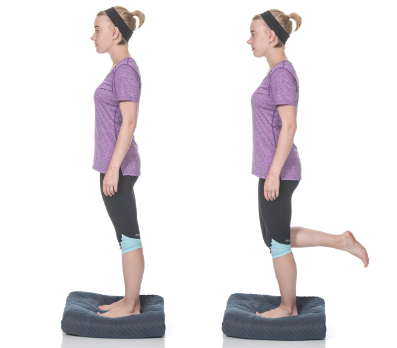
On uneven ground (or sometimes even on fl at pavement), a runner can easily roll or twist her ankle. This exercise increases stability in the ankle, calf and foot.
Stand on a foam pad (or a couch cushion that’s thick enough that you can’t feel the ground below) with your feet together and arms at your sides. Make sure your weight is evenly distributed throughout your feet. Lift one foot o the pad, balancing on your other leg. Try not to move your arms away from your body or let your weight shift from side to side as you hold this position for 30 seconds and switch sides. Complete four reps on each side.
Alternative: Step Up
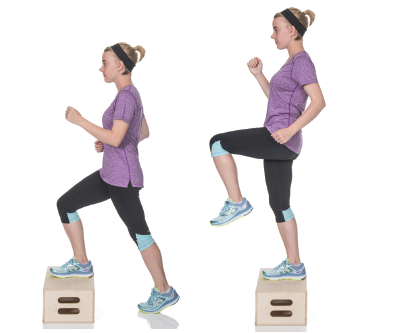
If you don’t have something to stand on at the ready, you can perform an active version of this exercise by using a step. Wear shoes for this exercise only.
Begin in a standing position in front of a step, stair or box. Slowly step onto the platform, raising your opposite knee to a 90-degree angle. Hold for three seconds and then lower back to the ground, trying to keep your standing knee from collapsing inward. Switch sides. Complete two sets of 12 reps on each side.
5—Stretch Step

Putting pressure on the middle of the fascia is another way to elongate that muscle, which helps prevent plantar fasciitis. Over time, you will be able to get your heel lower.
Stand with both feet on a step in a split stance, with one heel resting off the edge. Push your heel down in a slow, controlled manner until you feel a stretch in the arch of your foot. Hold for 30 seconds before switching sides. Perform two reps on each side.
6—Downward Dog

This is another good way to stretch the calf. Make sure you don’t force your heels down—only go to discomfort, not pain.
Begin on all fours, and push your body up into an inverted V position with your elbows and knees straight. Hold this pose, feeling a stretch through your back and legs. Keep your shoulders down and your hands and feet on the floor as you push your heels gently toward the ground. Hold for 30 seconds. Perform two sets.
7—Seated Stretch

The plantar fascia attaches to the toes, so grabbing your forefoot puts the fascia in a nice stretch.
Sit in a chair with one leg crossed over your other knee. Use one hand to hold your ankle and the other to hold your toes. Gently pull your toes backward until you feel a stretch in the bottom of your foot and hold for 10 seconds, and then switch feet. Perform 15 reps on each foot.